Temple Jogyesa de Séoul (조계사(서울))
789.4M 2021-12-22
55, Ujeongguk-ro, Jongno-gu, Seoul-si
+82-2-768-8500
Le temple Jogyesa est un
temple bouddhiste zen en Corée qui a la particularité d’être situé en
plein centre-ville de Séoul. Jogyesa se situe dans une rue perpendiculaire aux rues illuminées de Jongno, et à la rue menant à la station Anguk,
non loin de la rue d'Insadong.
La première chose que l'on remarque
en entrant dans le temple, ce sont les arbres qui font face au bâtiment principal âgés de plus de 500 ans. Un de ces
arbres mesure 26 mètres de haut et procure en été un ombrage apaisant.
Le temple a servi dès 1910 de résidence principale pour le moine Han Yong-un. Le bâtiment principal
érigé en 1938 est majestueux, décoré de nombreuses couleurs. A l’intérieur se trouve une statue du bouddha Sakyamuni. A l’extérieur,
en face, se trouve une pagode de sept étages contenant des reliques de bouddha.
Le temple Jogyesa ne possède pas cette atmosphère solennelle que l’on peut
retrouver dans les temples situés en montagne qui offrent par exemple une
vue panoramique sur la montagne ou sur la mer. Mais, situé en ville, il est facile d’accès et convient aux visiteurs à l’emploi du temps serré. A proximité du temple se trouvent des petites boutiques spécialisées dans la
vente d'articles bouddhistes
(chapelets, écrits, encens, etc) mais également des souvenirs tels que des poupées et des porte-clés. Les personnes intéressées par le bouddhisme y trouveront certainement
leur bonheur.
Galerie Gongpyeong du Centre d'art Séoul (서울아트센터 공평갤러리)
797.7M 2021-06-19
32, Ujeongguk-ro, Jongno-gu, Seoul-si
+82-70-4214-0070
Ouvert en 1992, le centre d’art Gongpyeong est un espace de 1652 m2, construit sur 2 étages avec 4 hall d’exposition.
C’est un des bâtiments principaux d’Insa-dong exposant divers oeuvres d’art, de l’occident en passant par les peintures coréennes jusqu’aux sculptures.
En hommage aux peintures coréennes qui gagnent un intérêt grandissant auprès du public, ce lieu consacre 2 ou 3 expositions annuelles exclusivement centrées sur elles.
Quartier Ikseon-dong (익선동)
803.6M 2023-01-16
Ikseon-dong, Jongno-gu, Séoul
Le quartier Ikseon-dong, dont les ruelles et les hanoks créent un ensemble harmonieux unique et plein de charme, est en train de devenir une destination prisée des touristes de tous âges. Il s'agit également d'un quartier dont le but est de favoriser les échanger entre les jeunes et les personnes âgées.
Palais Gyeongbokgung (경복궁)
815.4M 2025-09-19
161, Sajik-ro, Jongno-gu, Seoul
+82-2-3700-3900
Yi Seong-gye (1335-1408), le fondateur de la dynastie Joseon, déplaça la capitale à Hanyang (l’ancien nom de Séoul) et construisit Gyeongbokgung, le premier palace de la dynastie. Terminé en 1395, Gyeongbokgung fut le premier palais royal où le roi non seulement résidait mais aussi dirigeait le pays. Edifié sur les principes du feng shui de l’époque, le site choisi était entouré des montagnes Bugaksan, Namsan, Inwangsan et Naksan. Le palais est exposé au sud pour bénéficier de la plus longue exposition au soleil avec les montagnes derrière qui bloquent les vents froids du Nord.
En tant que palais royal, son architecture représente ce qui se faisait de mieux à l’époque. La porte Gwanghwamun, la porte Heungnyemun et le hall du trône Geunjeongjeon furent construit dans un style grandiose pour représenter la dignité et l’honneur de la nation.
La palais Gyeongbokgung possède de nombreux atouts culturels : ses murs en pierre, ses toits et ses statues Haetae reflètent le degré d’avancement architectural de la dynastie Joseon. Le pavillon Gyeonghoeru (où se tenaient des banquets pour les délégations étrangères et pour le roi et ses dignitaires) et le bassin Hyangwonjeong (un endroit pour la détente) sont considérés comme les plus beaux exemples du genre en Corée.
Ne manquez pas de visiter le Musée national folklorique situé à proximité après votre visite du palais (entrée gratuite).
Musée des chouettes (부엉이박물관)
820.5M 2022-09-19
143, Bukchon-ro, Jongno-gu, Seoul-si
+82-2-3210-2902
Si vous êtes un passionné des chouettes et que vous aimez l’art des pliages, nous vous conseillons le musée des chouettes. Ce musée ayant pour thème les chouettes, comporte nombre d’oeuvres d’art, de pliages, d’objets utilitaires et accessoires en tout genre. Ces objets proviennent de 70 pays tels que la Chine, les Etats-Unis, la République Tchèque ou la Pologne. Plus de 2,000 pièces y sont exposées.
Festival de la culture royale (궁중문화축전)
820.2M 2025-09-03
161, Sajik-ro, Jongno-gu, Seoul
+82-2-3210-4684
Le festival de la culture royale a lieu dans les 5 palais du pays et dans le sanctuaire de Jongmyo. Organisé depuis 2014 entre la fin avril et le début du mois de mai, les visiteurs ont ici l'occasion d'apprécier des programmes originaux en rapport avec la culture traditionnelle et royale de Corée dans les différents palais de Séoul tout en profitant du temps clément du printemps. Le festival est désormais organisé deux fois par an, au printemps et en automne.
Musée du beau thé (Beautiful Tea Museum) (아름다운 차박물관)
848.2M 2021-10-01
19-11, Insadong-gil, Jongno-gu, Seoul-si
+82-2-735-6678
Le Musée du beau thé est un espace multiculturel comprenant une galerie vous invitant à découvrir des oeuvres en porcelaine réalisées par des jeunes artistes, une boutique proposant environ 110 sortes de thé de différents pays tels que la Corée, la Chine, le Japon, Taïwan, le Sri, l’Inde et l’Europe, et un salon vous permettant de déguster un bon thé.
La salle d’exposition permanente se diviseen gros en trois sections respectivement destinées à la Corée, à la Chine et au Tibet. Divers styles de services à thé y sont exposés pour que vous ayez un aperçu des caractérisques de l’art du thé de chaque pays. Des expostions et des ventes y sont également organisées par des jeunes artistes.
Le musée exposant près de 130 types de thé, vous pourrez y faire des achats ou déguster différentes variétés tels que thé classique, thé vert, thé bleu, thé noir, thé aux herbes, thé aux fleurs, etc.
Ayant rénové une maison traditionnelle, le musée possède un patio, où a été aménagé un café. Vous pourrez y créer votre propre recette et déguster ce thé tout en visitant le musée.
Alive Museum (Insa-dong) (박물관은 살아있다 - 인사동점)
912.8M 2021-04-01
12, Insadong-gil, Jongno-gu, Seoul
+82-2-1544-8506
Le musée 'Alive Museum' se situe dans le quartier Insadong, quartier réputé pour son mélange de tradition et de modernité. Le musée est composé de deux étages en sous-sol avec 100 oeuvres dans le domaine du trickeye ou du trompe-l'oeil. Le musée propose également des oeuvres digitales et interactives pour une expérience ludique et complète.
Porte Gwanghwamun (광화문)
938.7M 2022-12-14
161, Sajik-ro, Jongno-gu, Seoul-si
+82-2-3700-3900
Gwanghwamun est la porte principale du Palais Gyeongbukgung, fondé en 1395, par le premier empereur de la dynastie Joseon, Taejo.
C’est la porte du sud parmi les quatre portes de la capitale sud-coréenne. Son nom signifie “Que la Lumière de l’Illumination recouvre le Monde!” et elle porte le but profond que les gens qui ont fondé la dynastie Joseon avait, en créant une nouvelle dynastie.
La Porte Gwanghwamun a été construite de granite. Au centre, il y a une entrée ressemblant à un arc-en-ciel, appelée Hongyemun, et au-dessus, se trouve la tour de la porte. La Porte Gwanghwamun renferme un souvenir douloureux dans l’histoire de la Corée. Durant l’ occupation japonaise de la Corée, de façon à tuer les esprits des citoyens coréens, le général du gouvernement japonais avait détruit la porte et construit son propre bâtiment gouvernemental. L’apparence réelle de la porte est celle de 1968 lorsqu’elle a été reconstruite en utilisant du béton, et elle est située environ à 10m derrière le point d’origine. Pour restituer la forme d'origine de la porte, le gouvernement a entrepris des travaux d'aménagement à partir de 2006, ces travaux se sont terminés le 15 août en 2010.
Musée de l'Histoire de Corée (대한민국역사박물관)
1.0Km 2022-12-14
Séoul, Jongno-gu, Sejongdae-ro 198
+82-2-3703-9200
대한민국역사박물관은 19세기 말 개항기부터 오늘날에 이르는 대한민국의 역사를 종합적·체계적으로 보여주는 국내 최초의 국립 근현대사박물관이다. 종로구 세종대로에 있는 대한민국역사박물관은 옛 문화체육관광부 건물을 리모델링하여 건립한 지상 8층 건물로, 4개의 상설전시실과 2개의 기획전시실로 이루어져 있다. 이 밖에 세미나실, 강의실, 카페, 문화 상품점, 옥상 정원 등도 갖추고 있다.
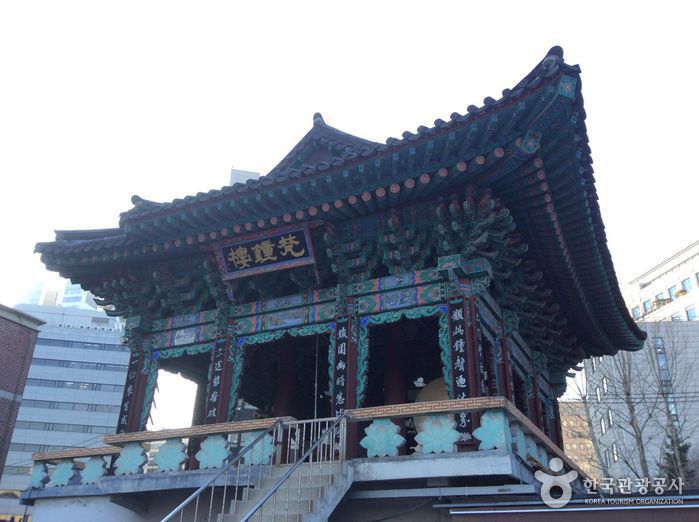
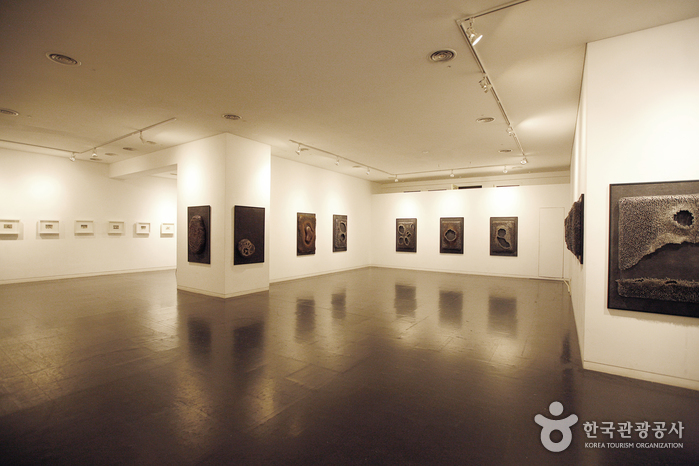

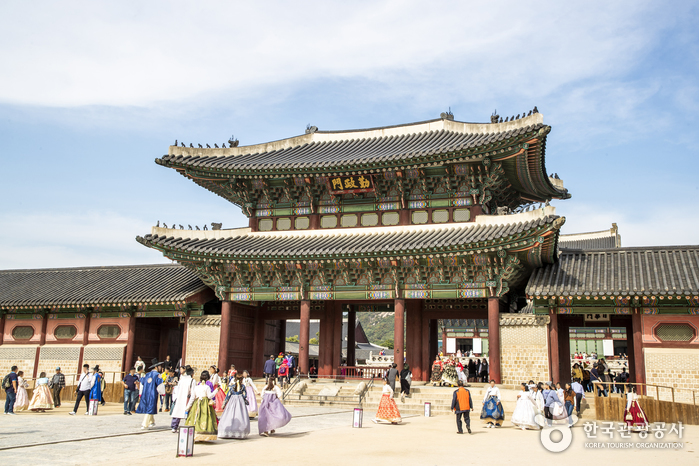
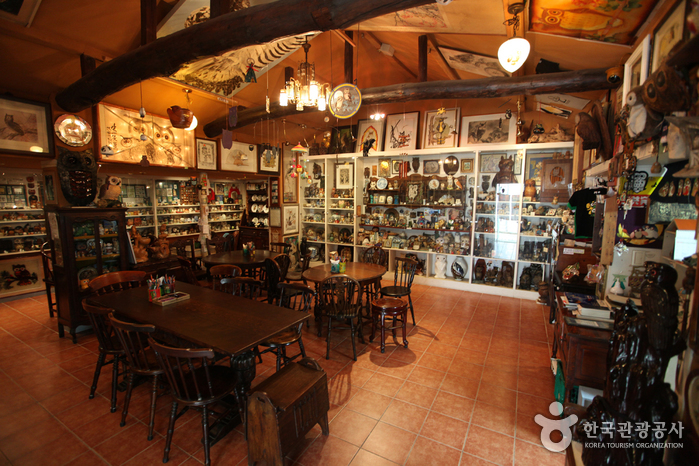
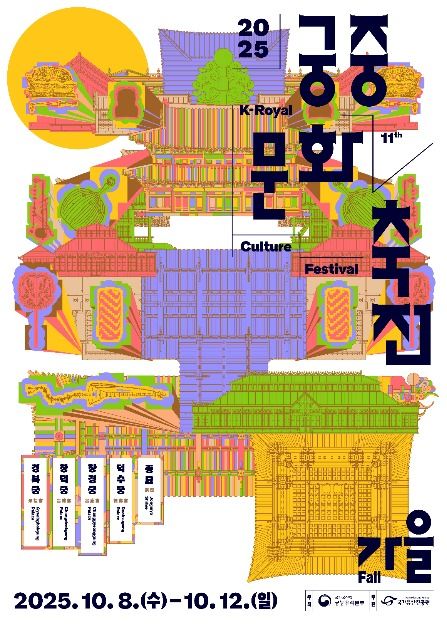
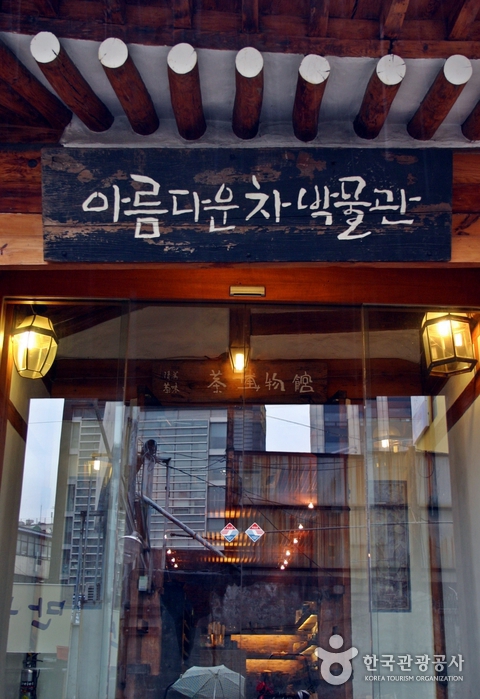
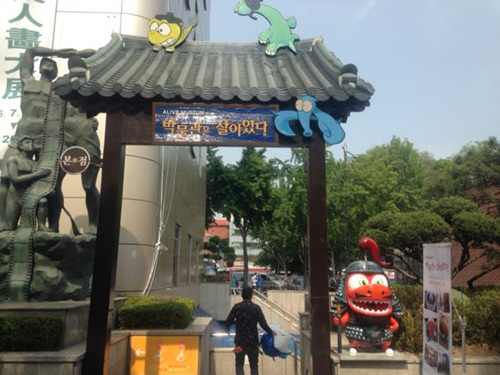
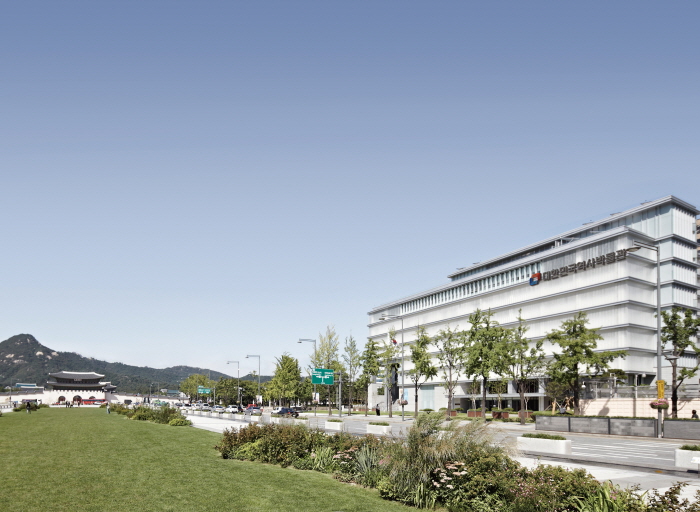
 Français
Français
 한국어
한국어 English
English 日本語
日本語 中文(简体)
中文(简体) Deutsch
Deutsch Español
Español Русский
Русский